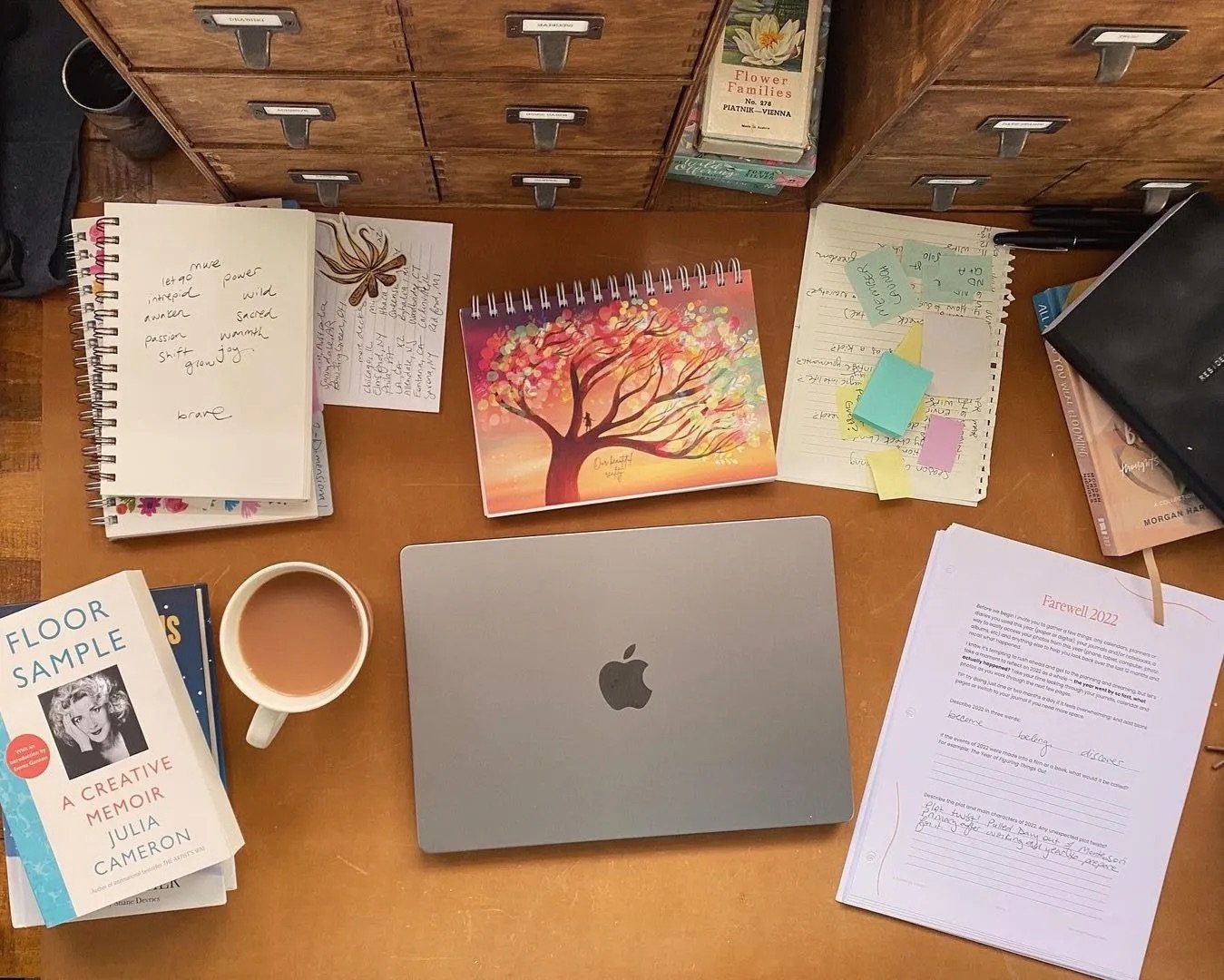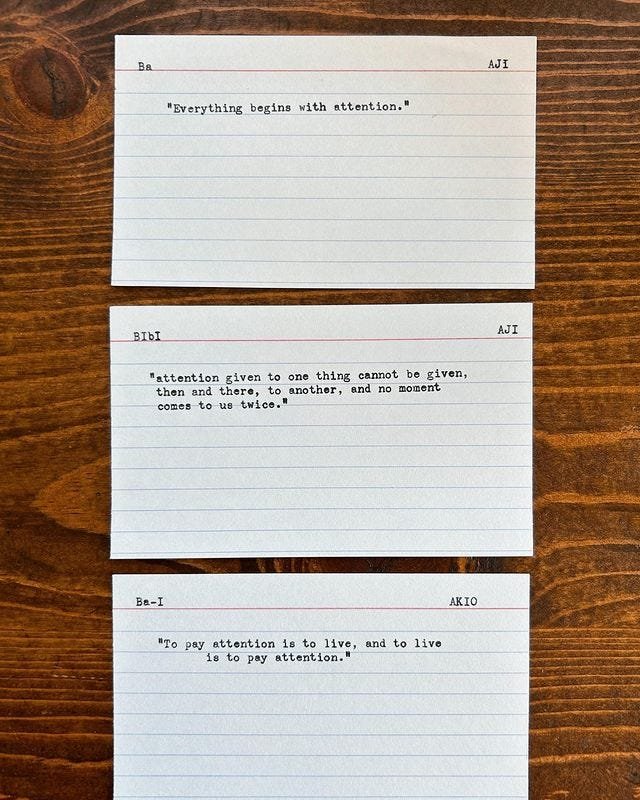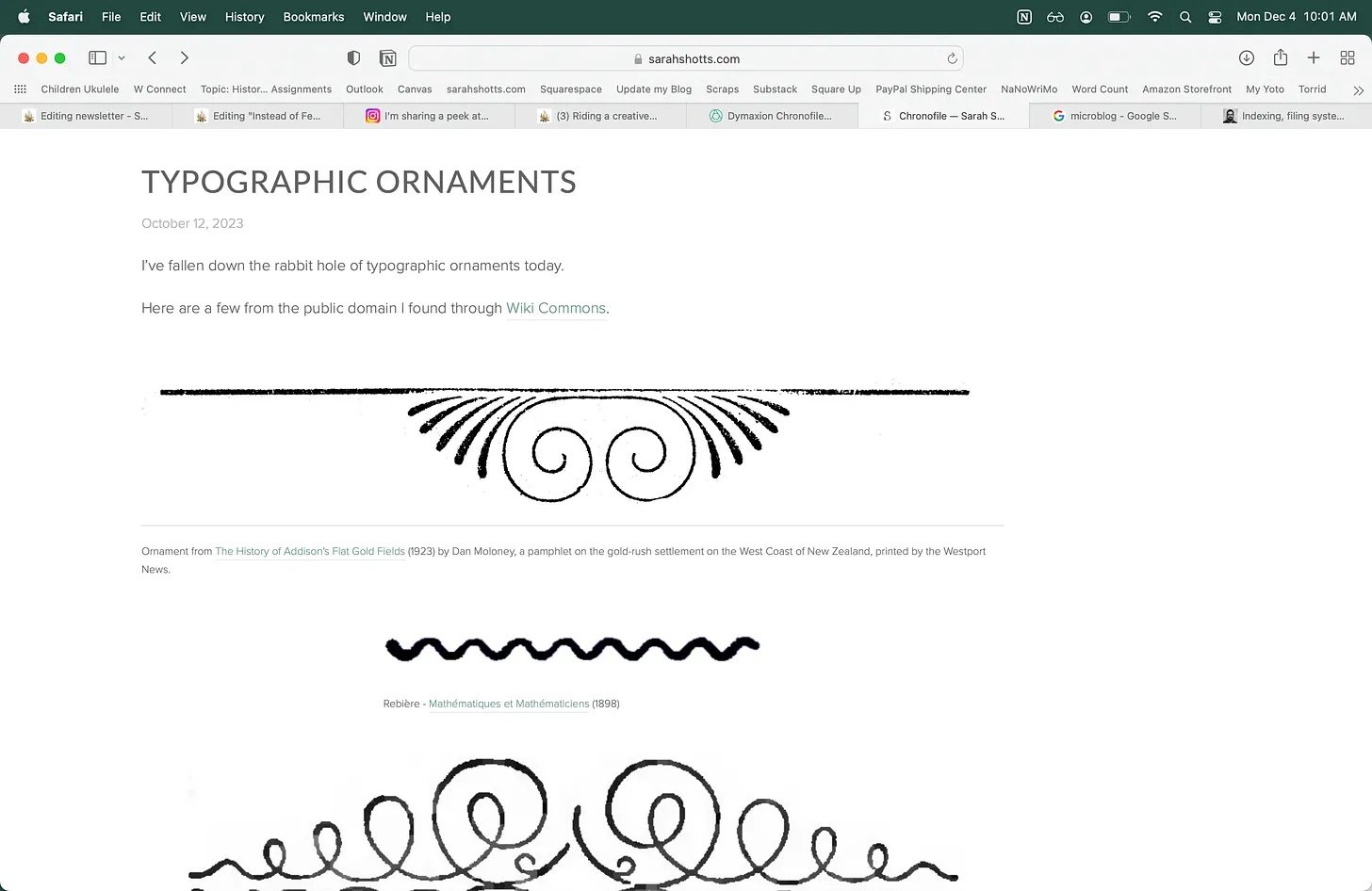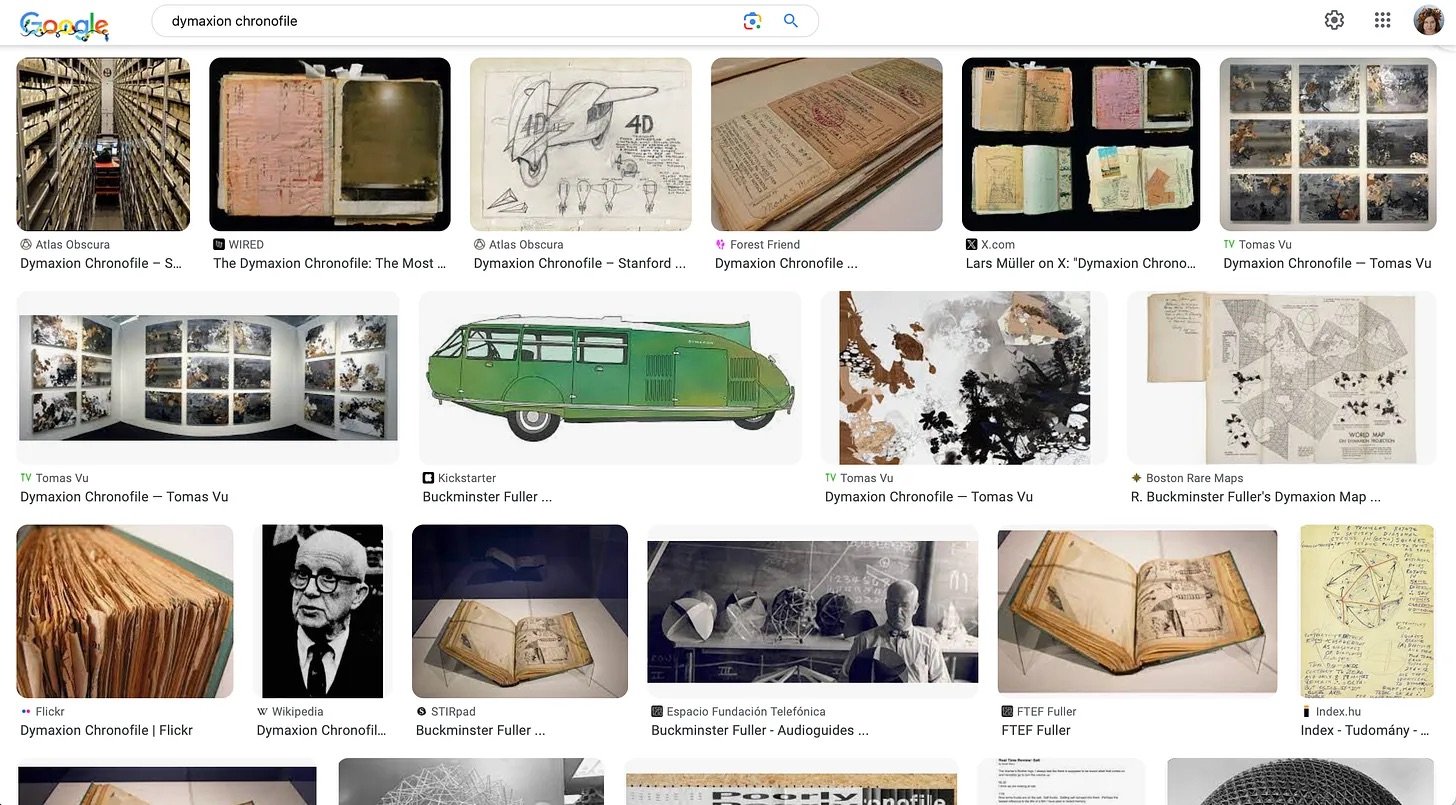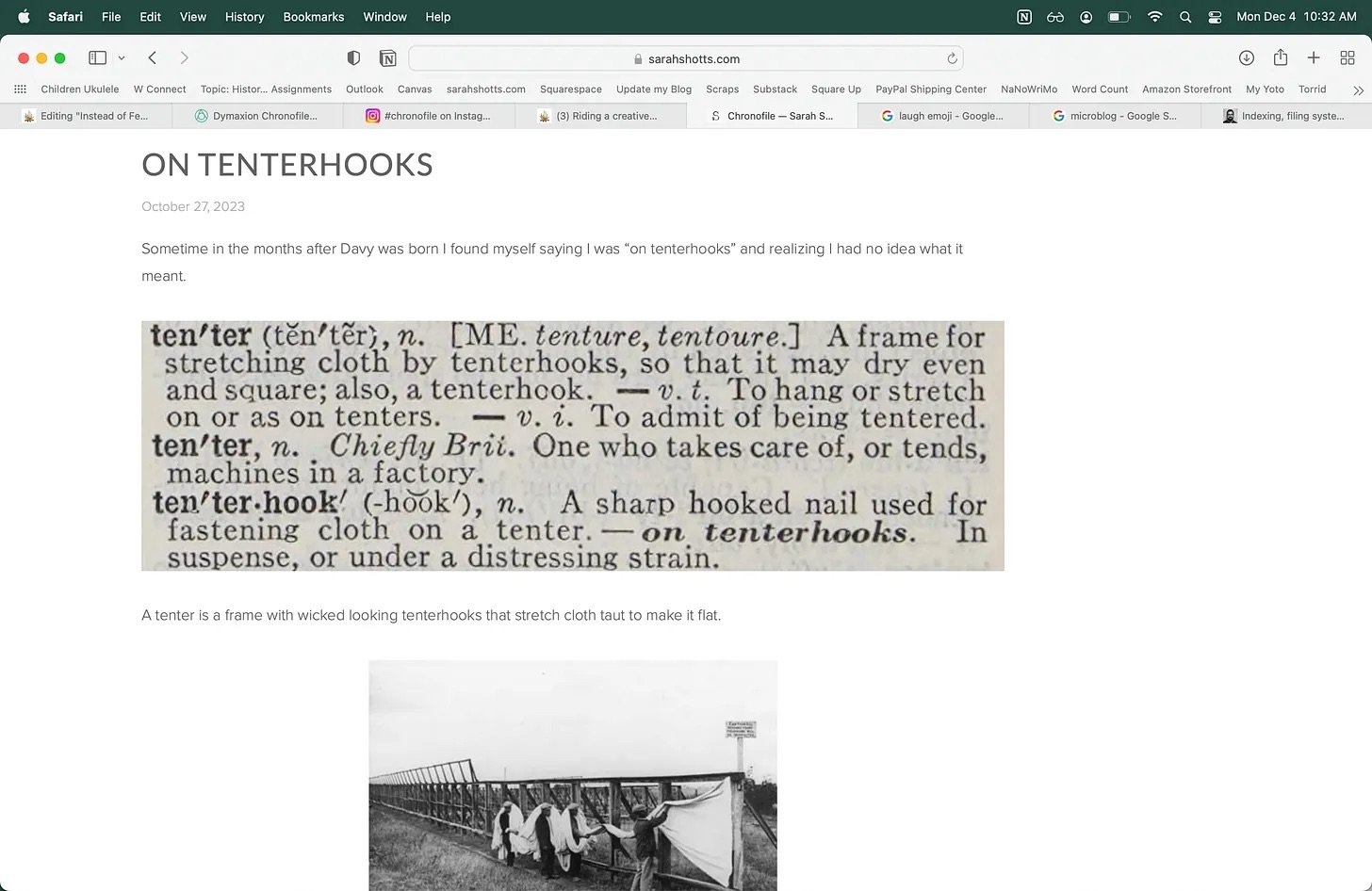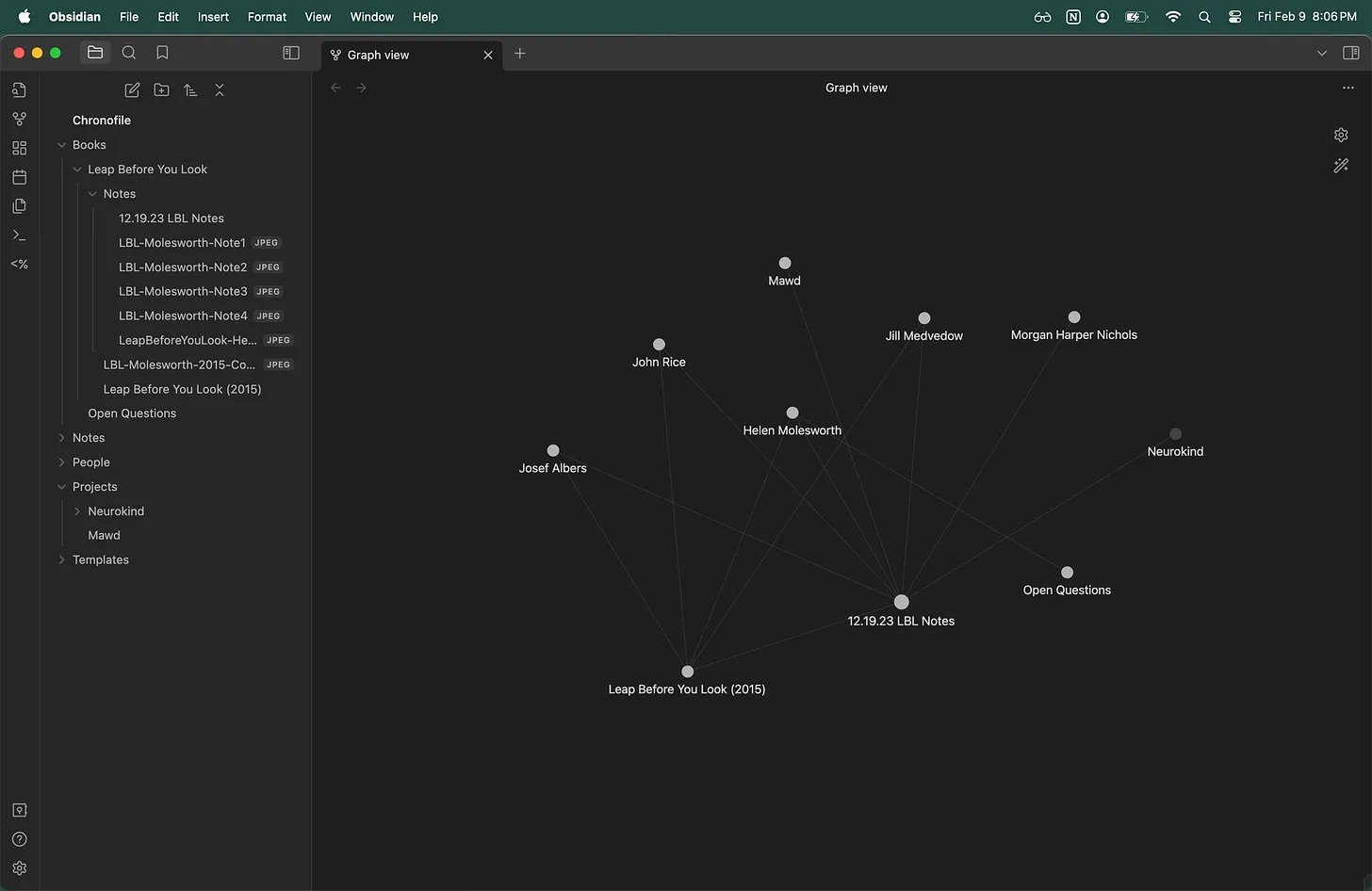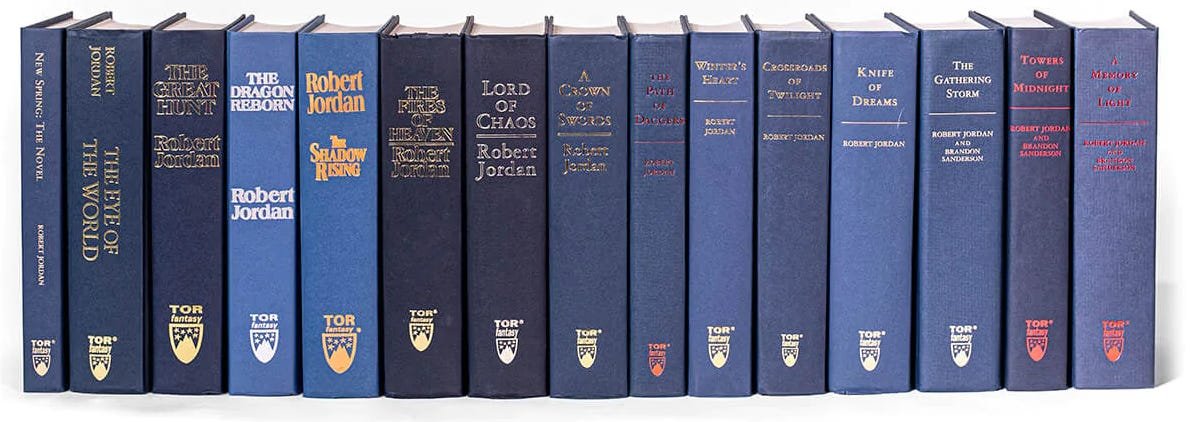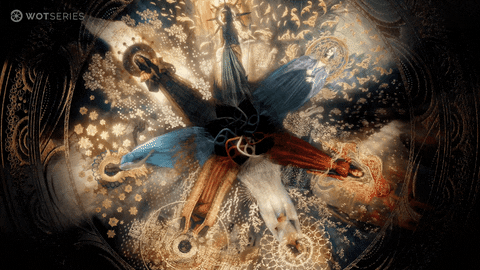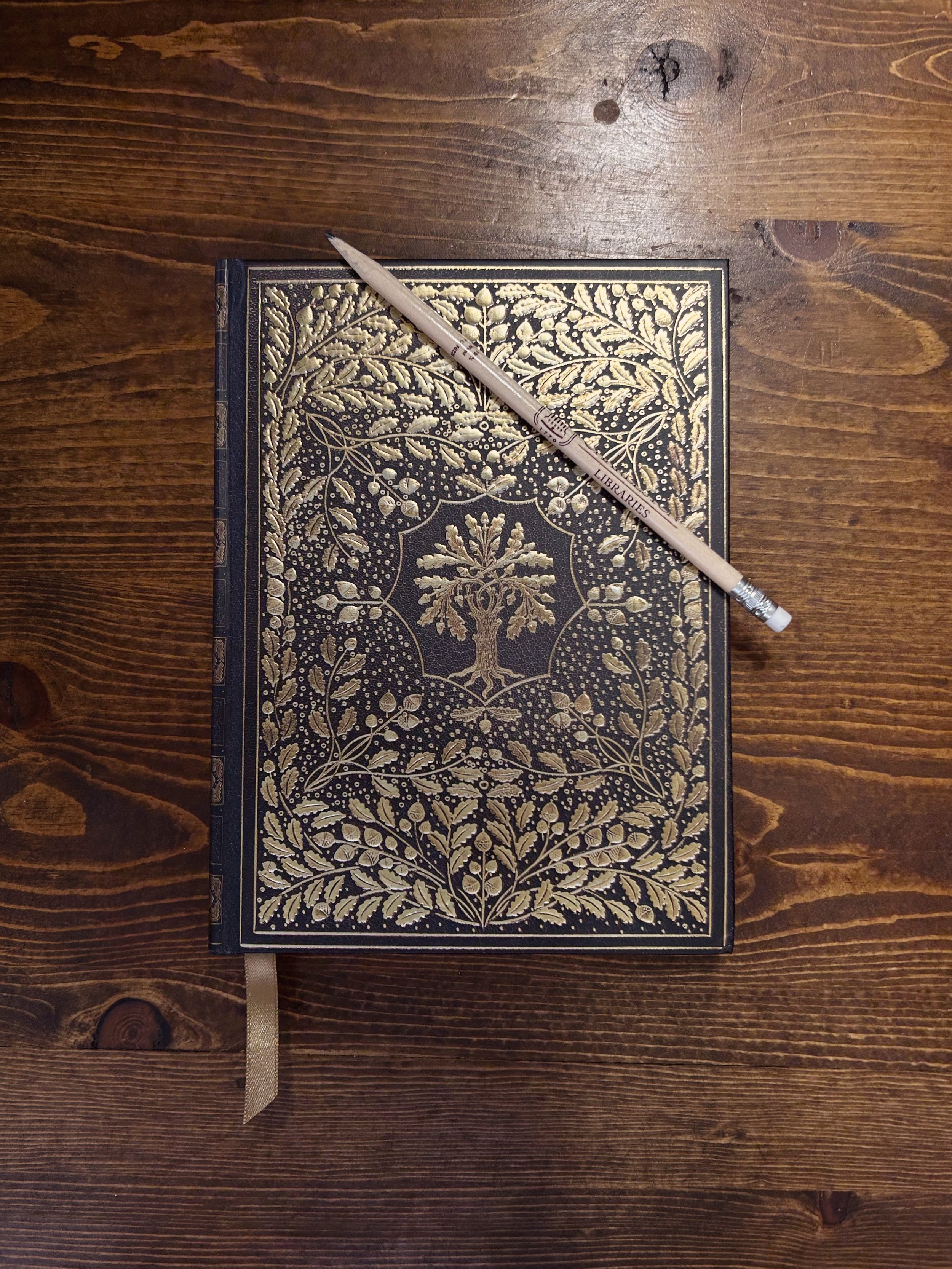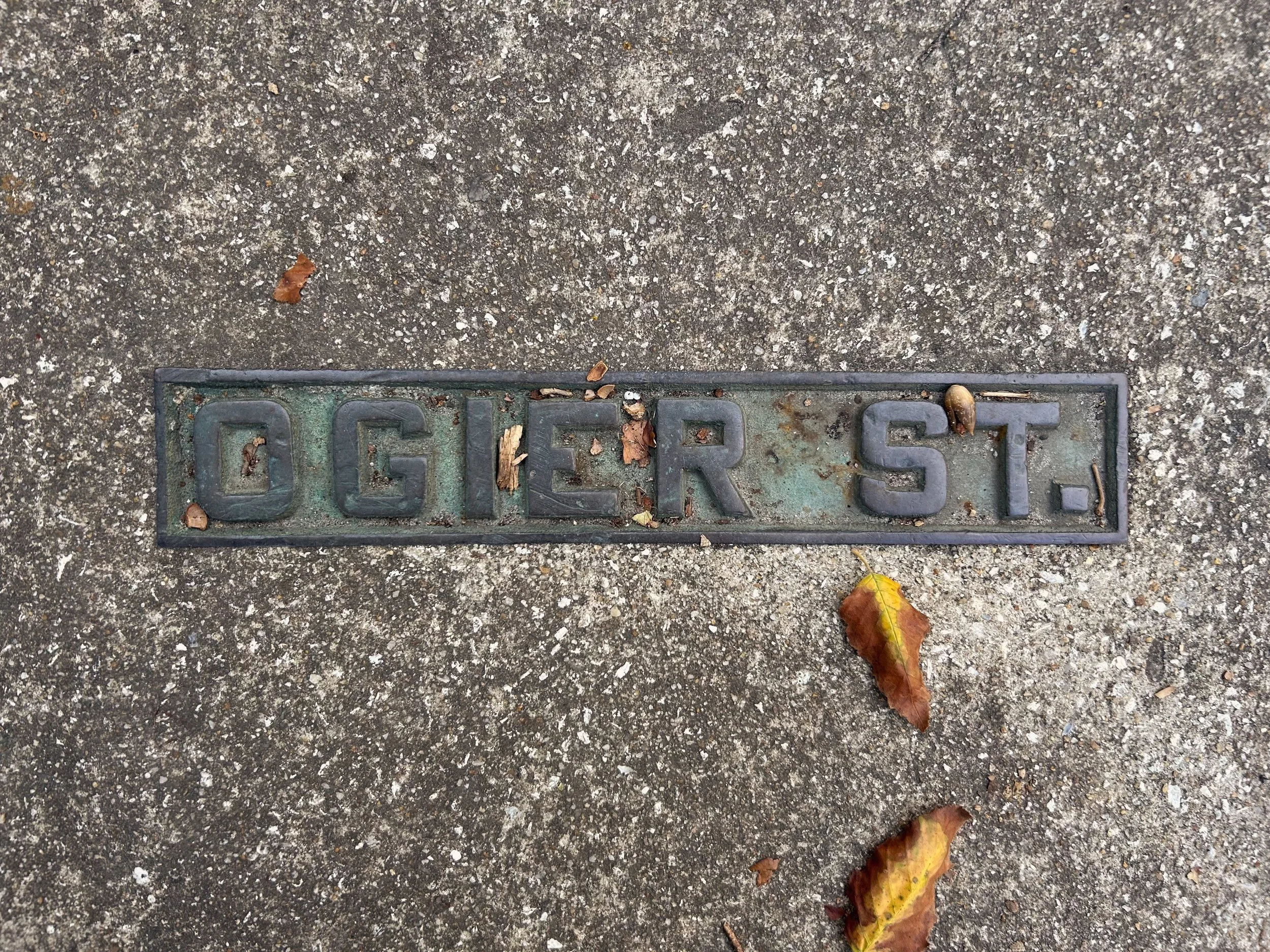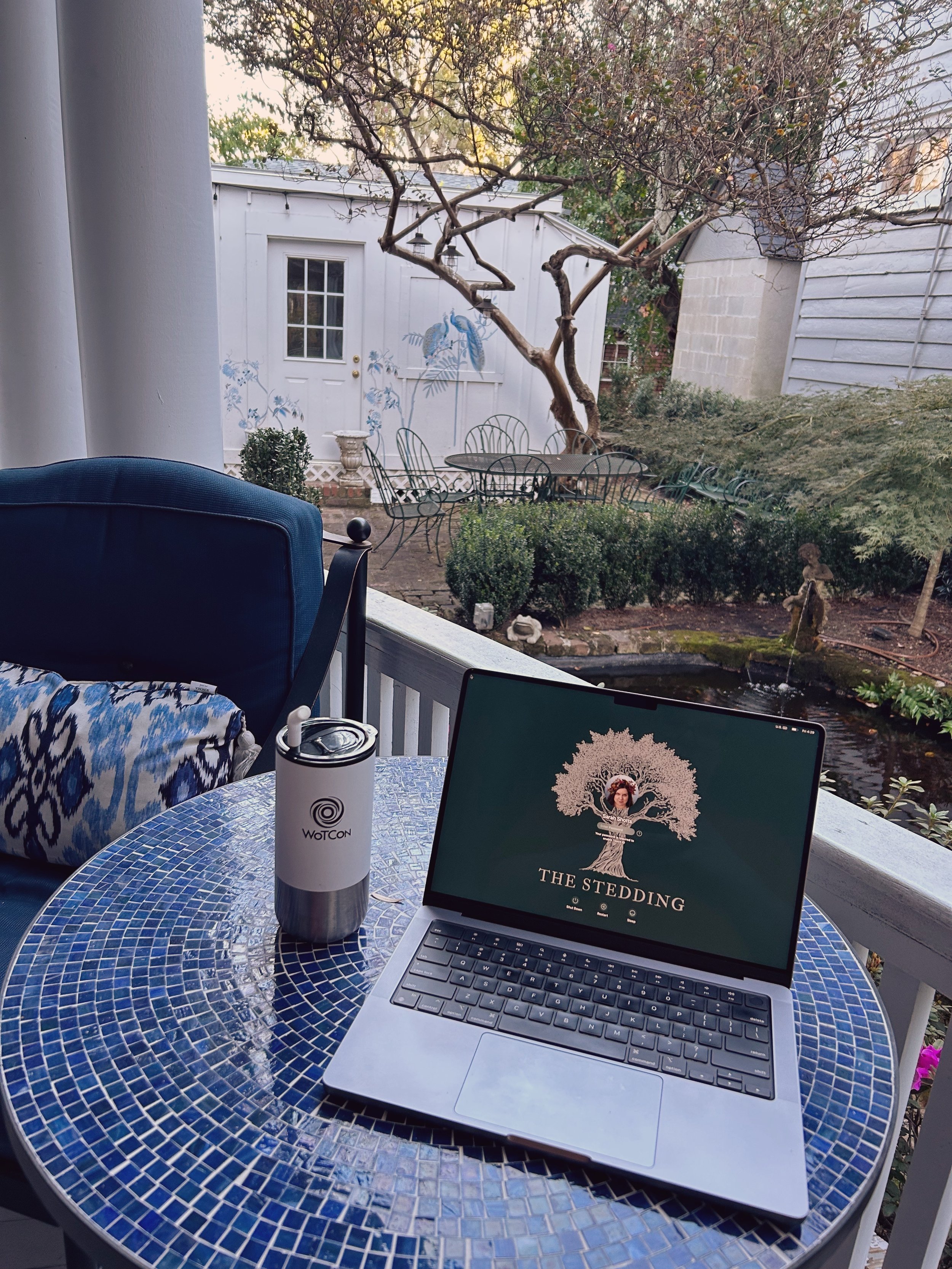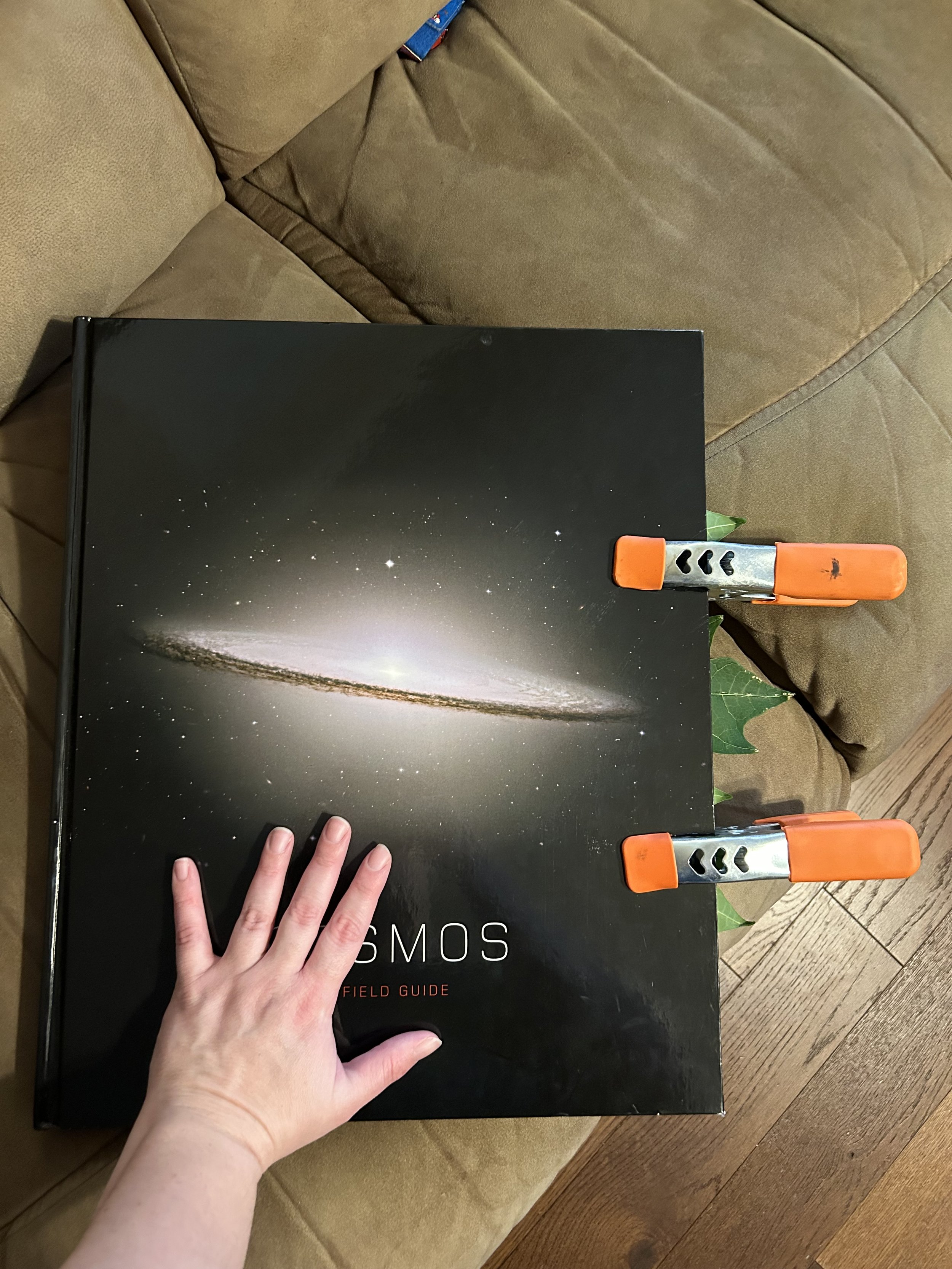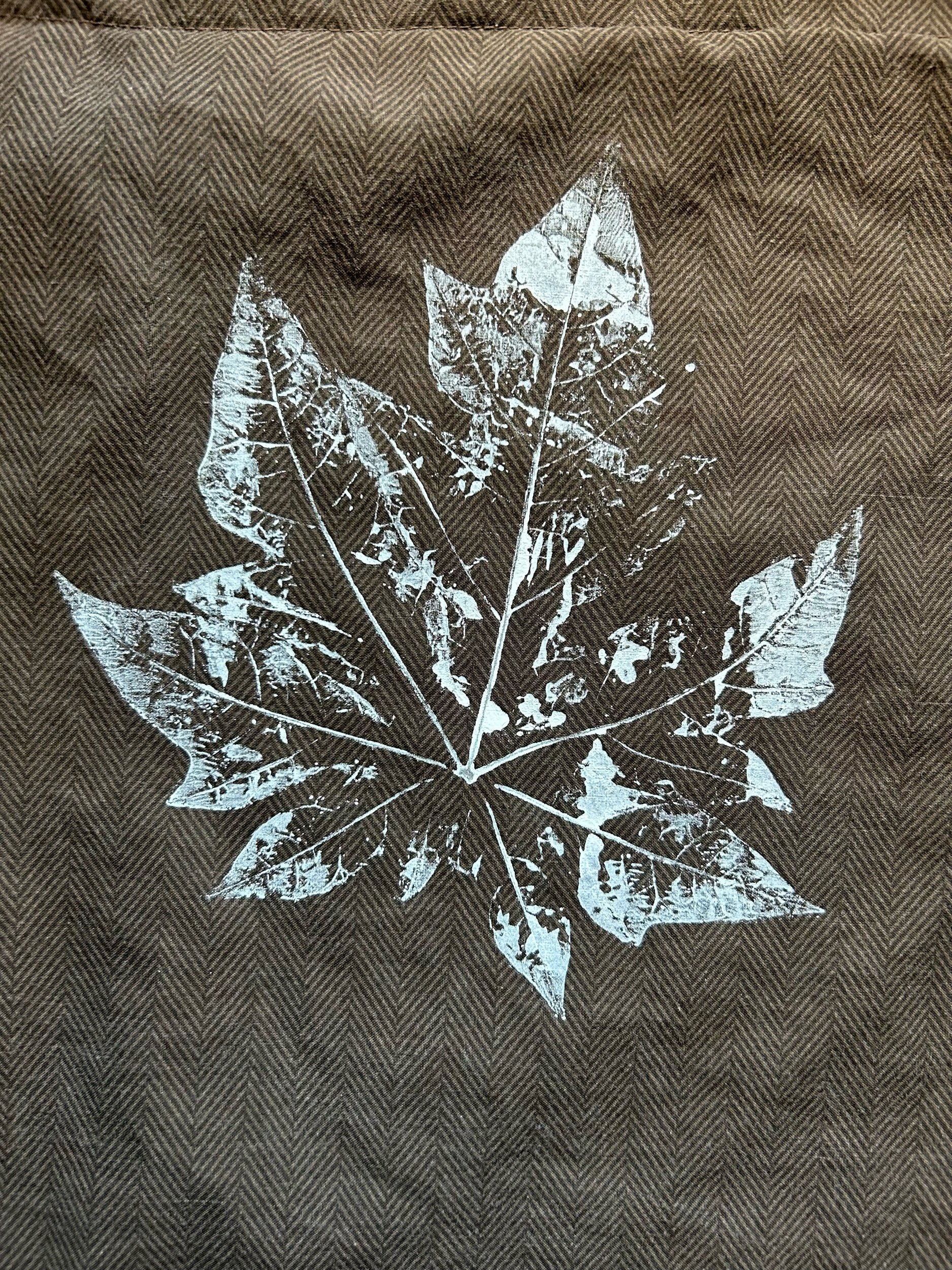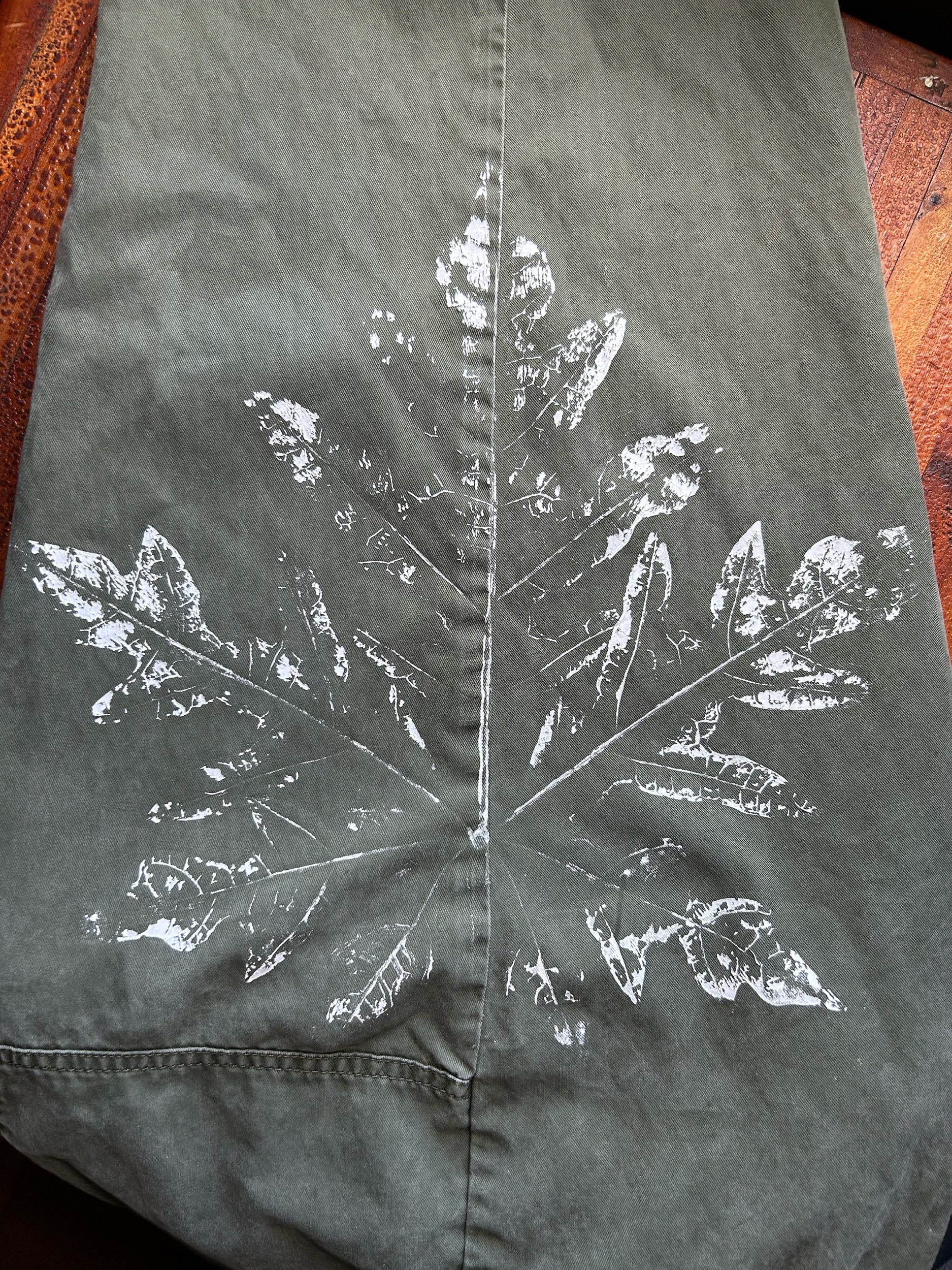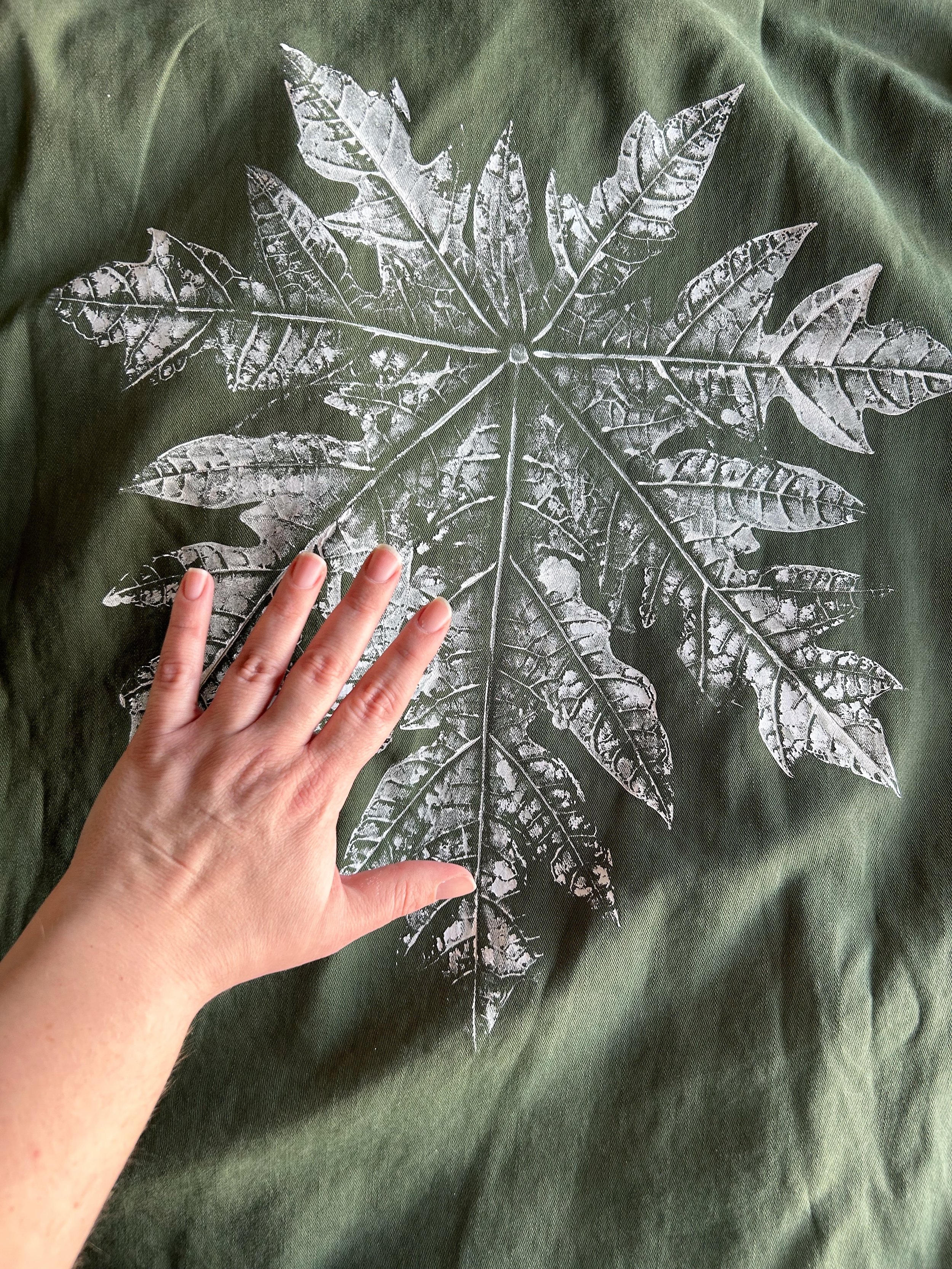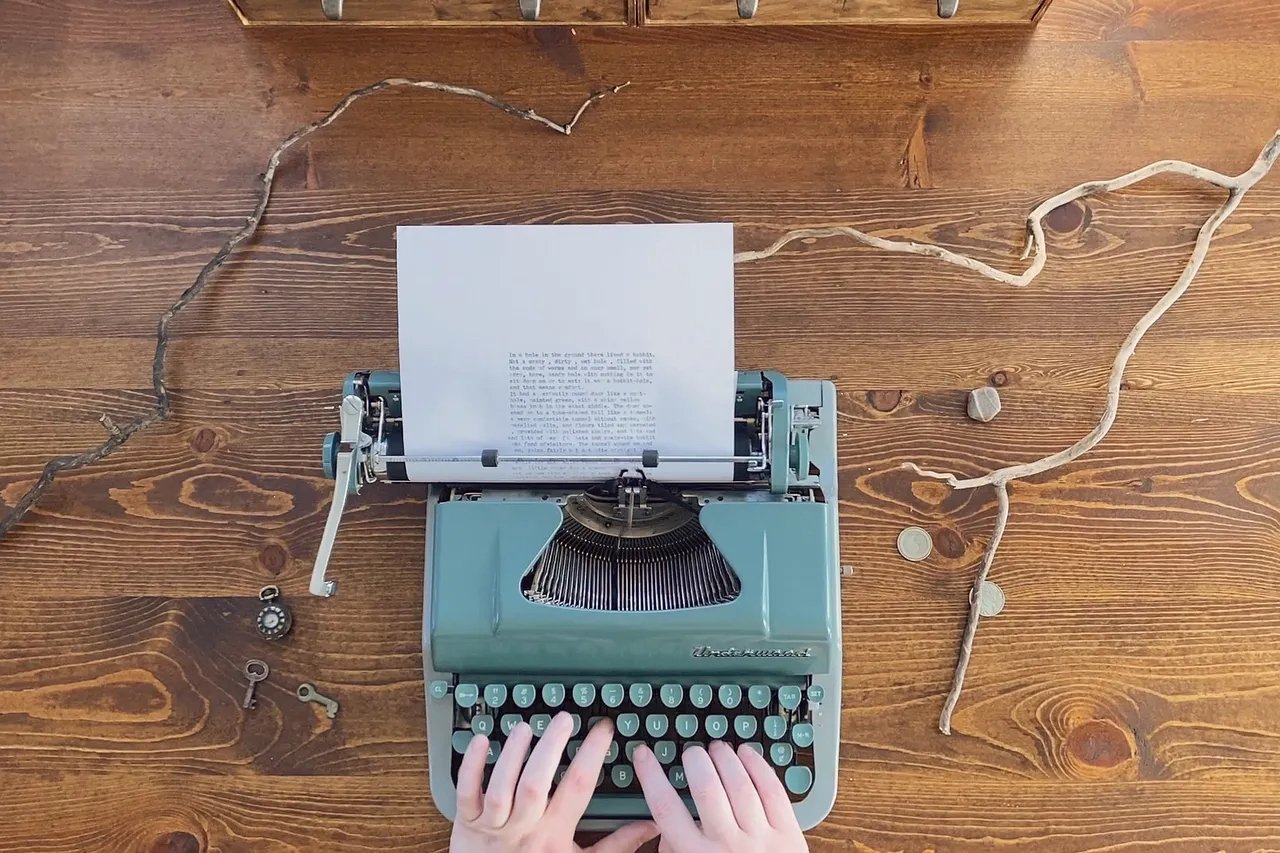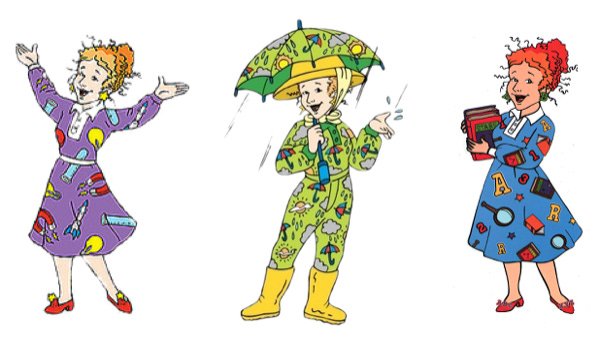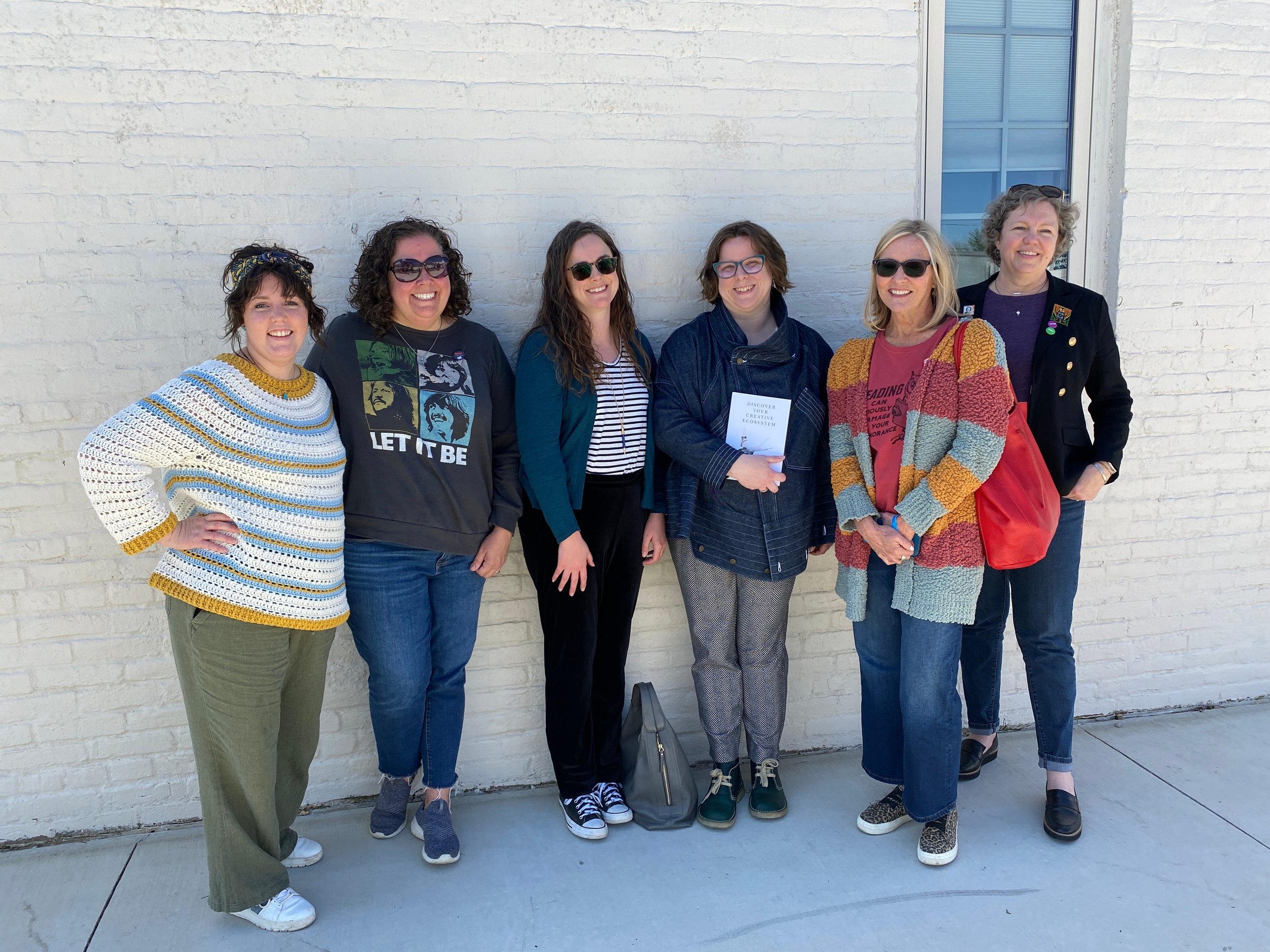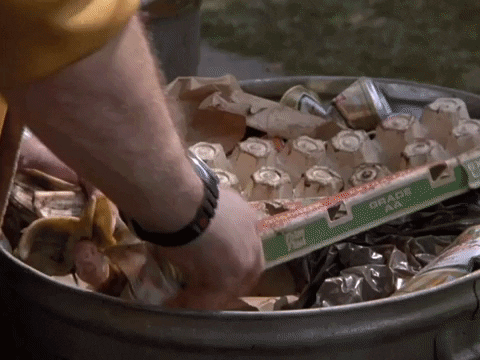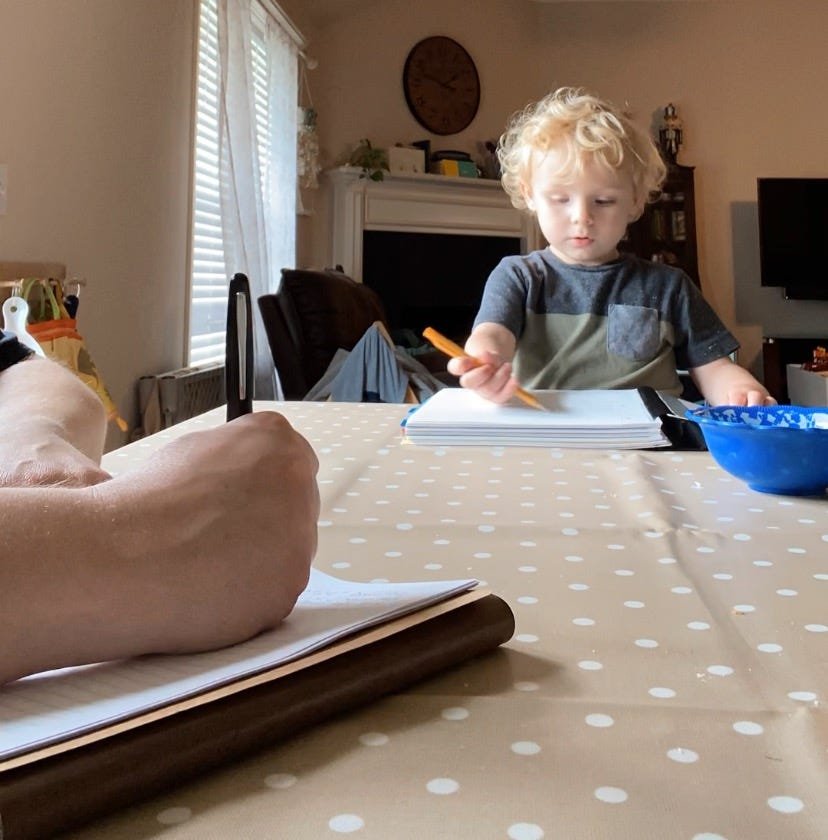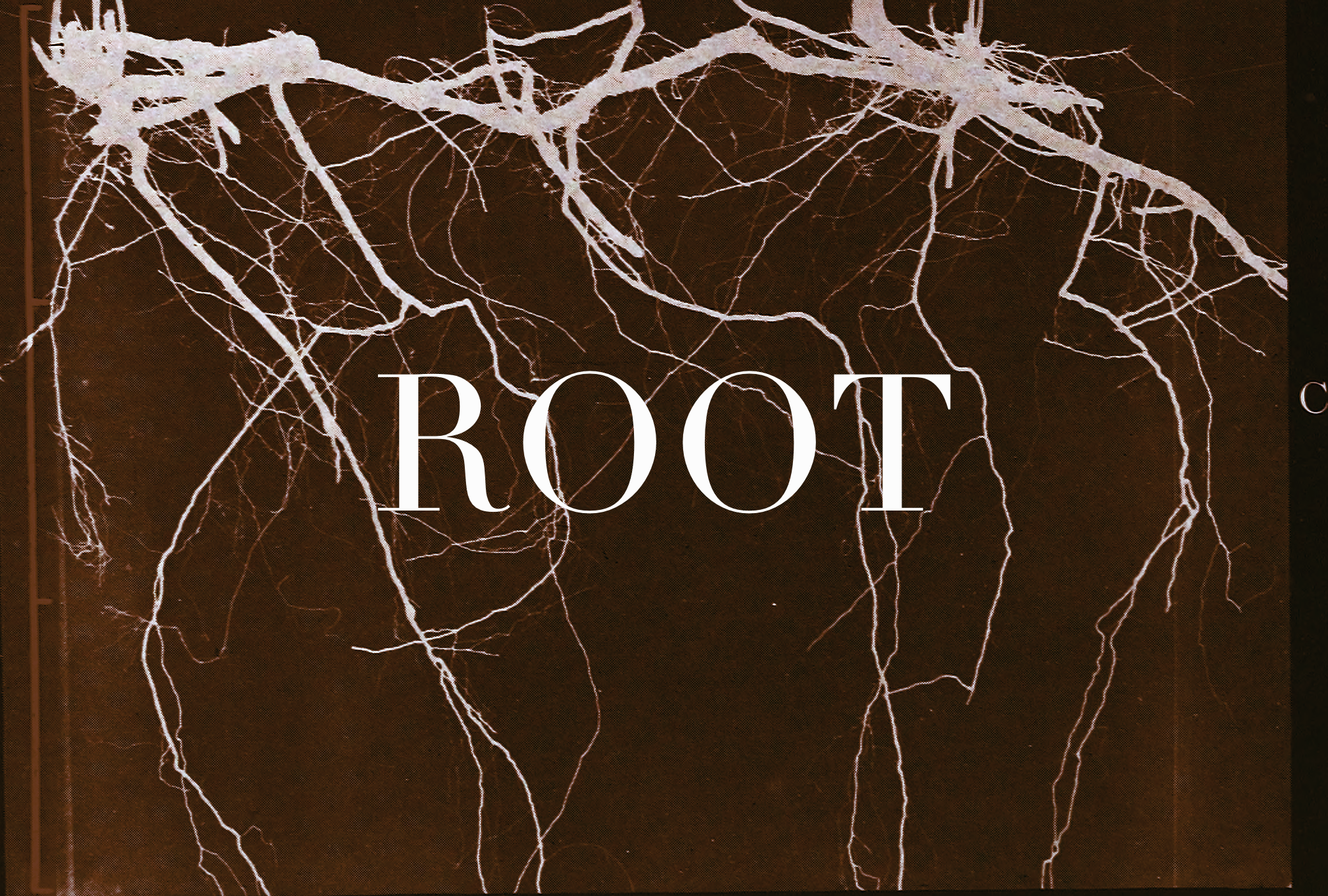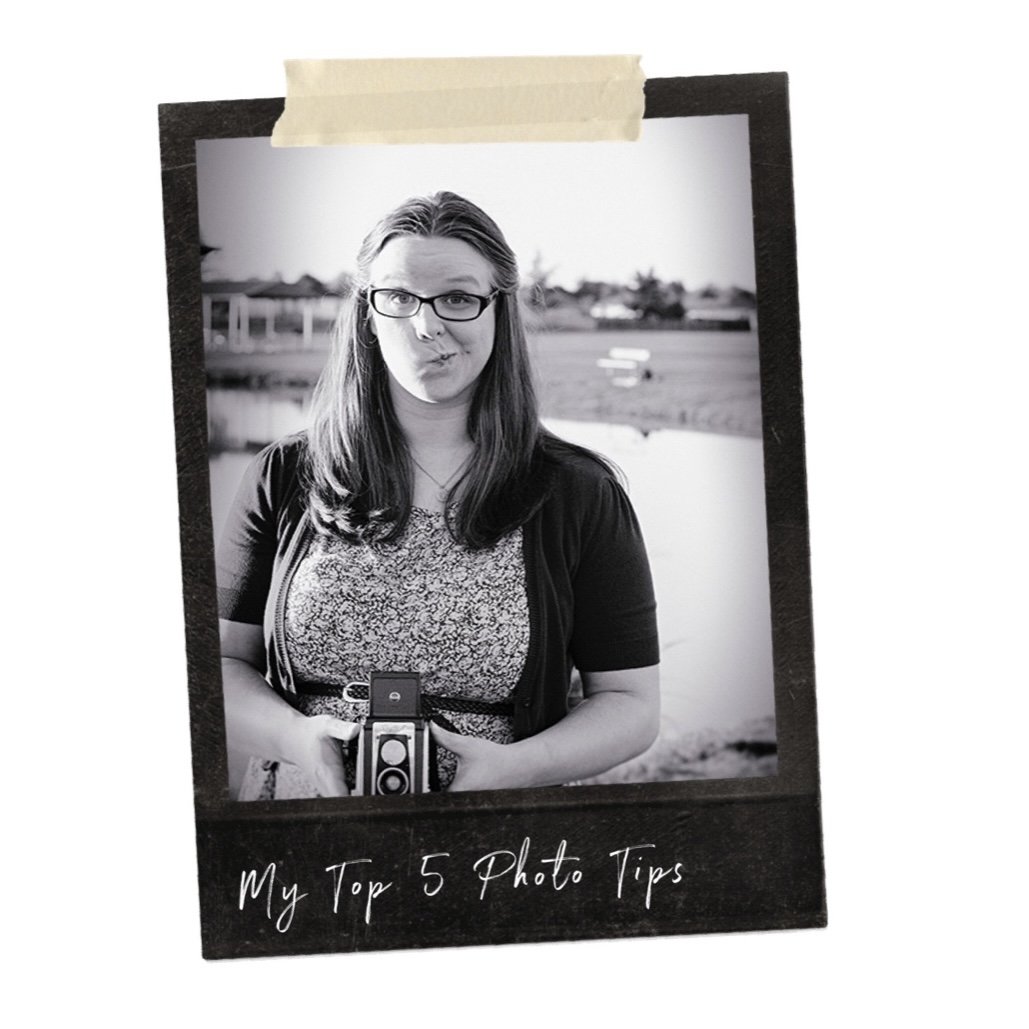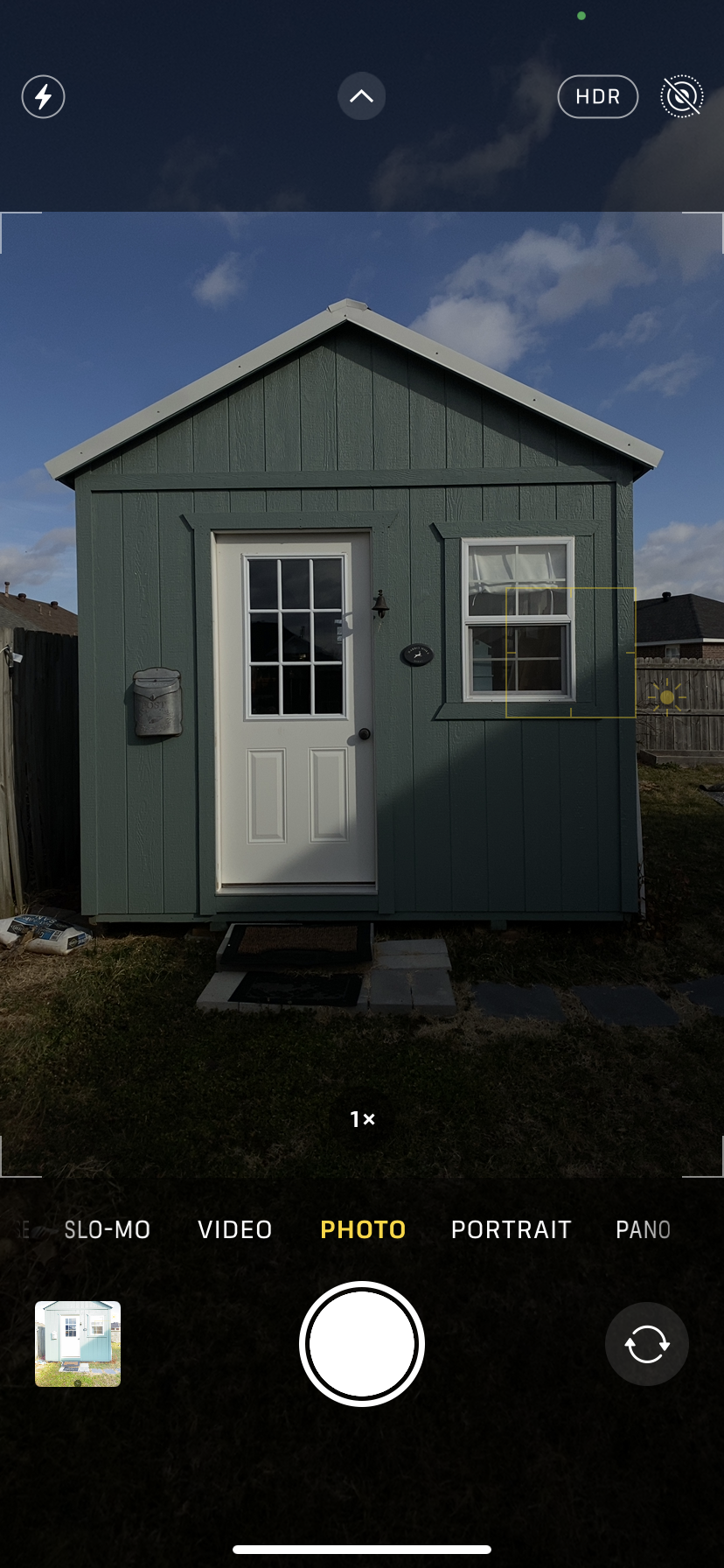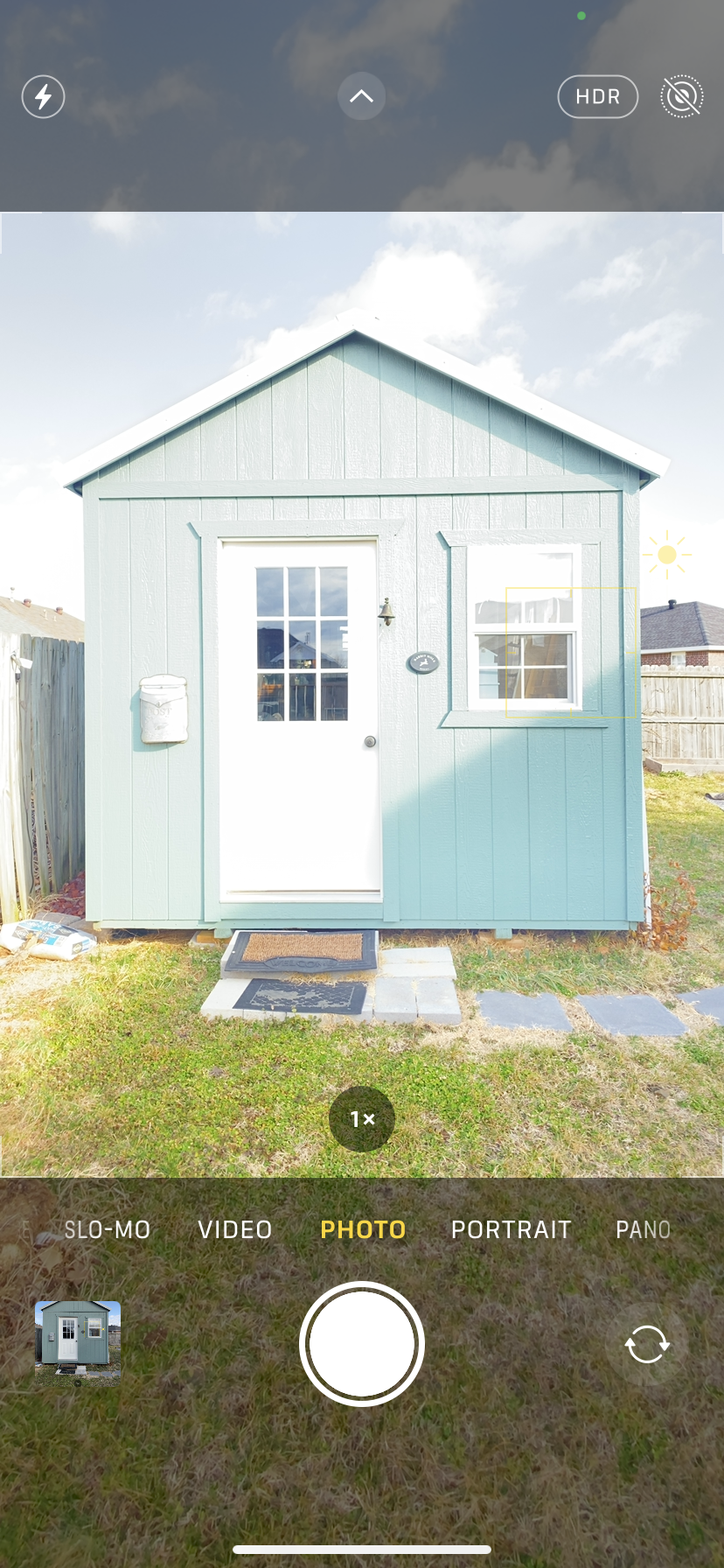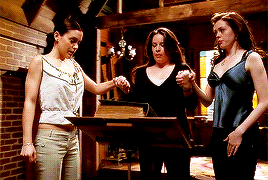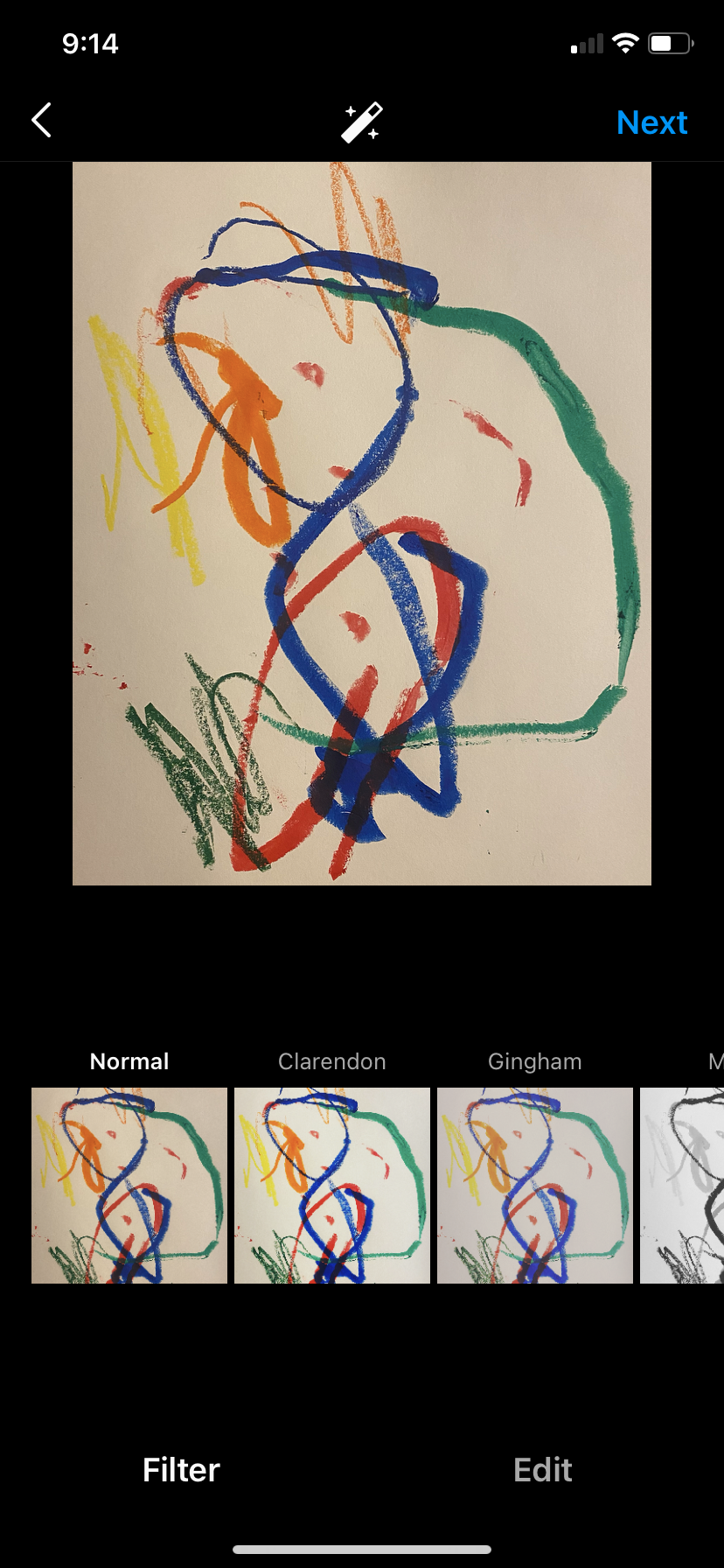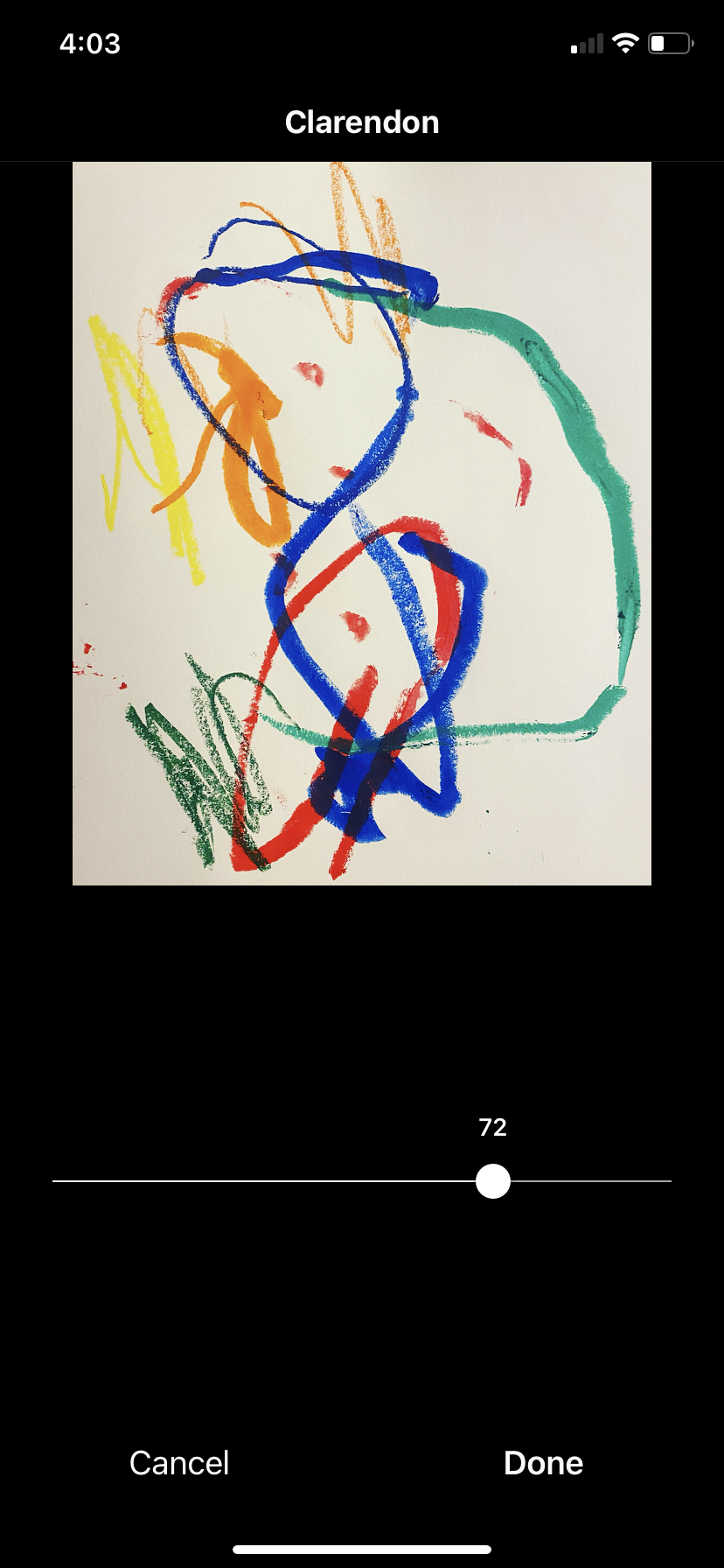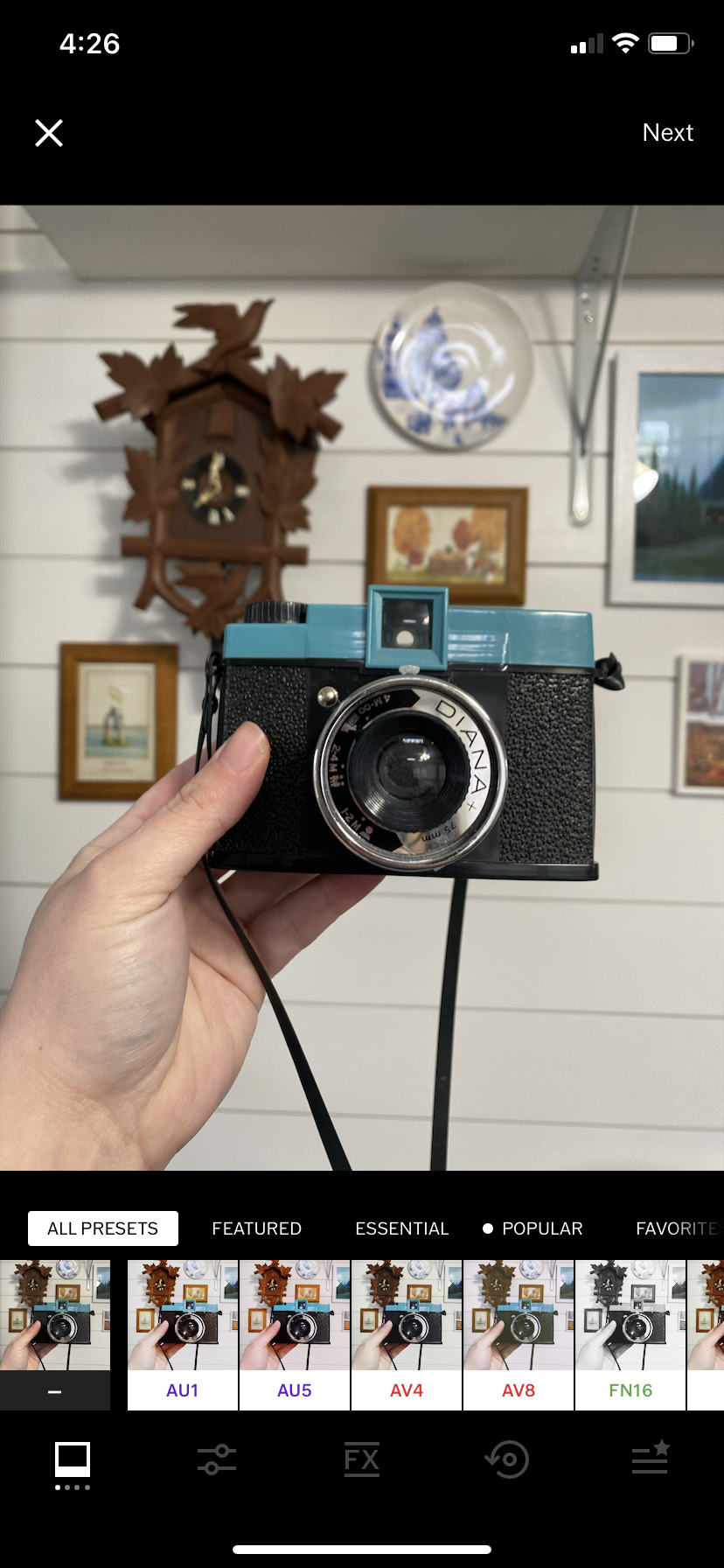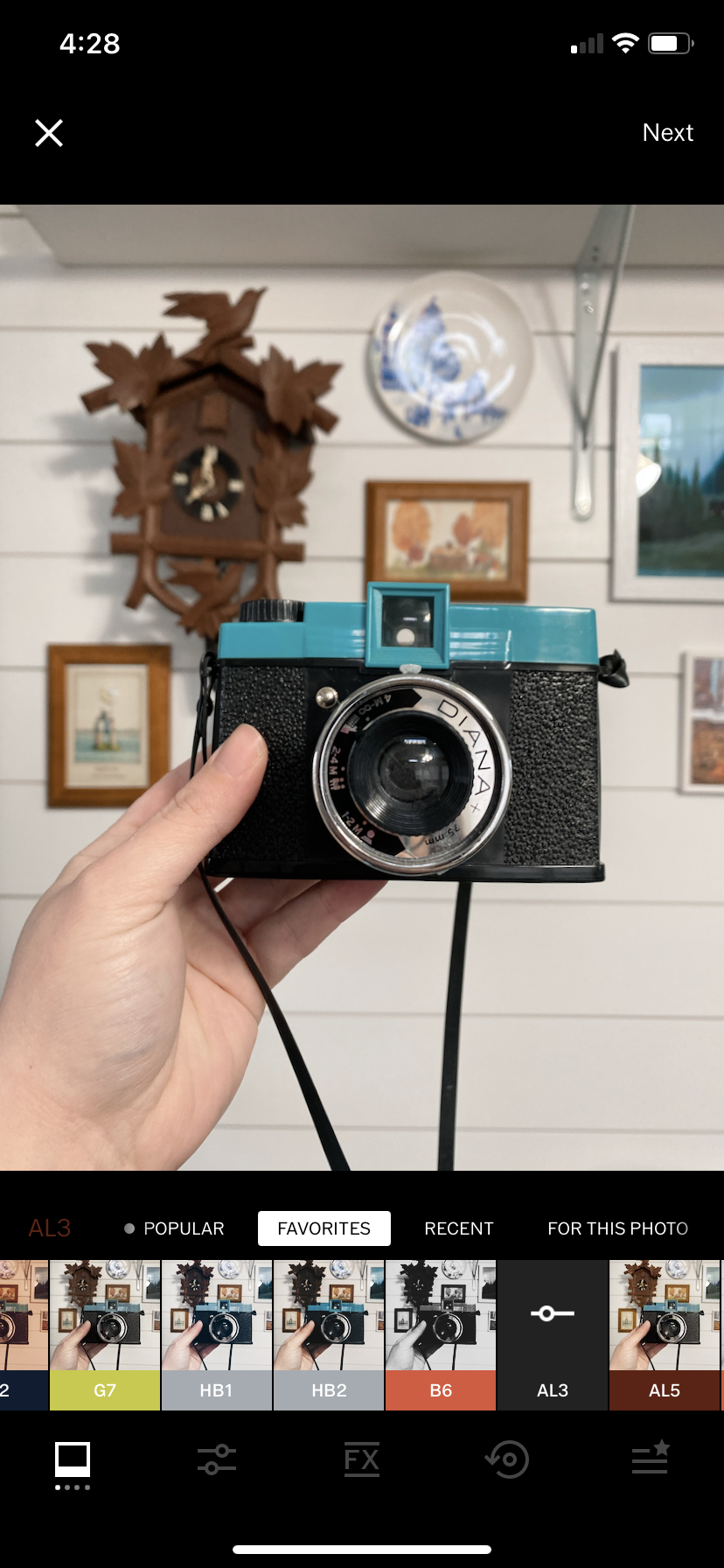I’ve always loved note taking.
Even as a kid I would collect notes and information, magazine pages, booklets. I think it’s something of a neurodivergent impulse. Autistic folks often love collecting things and I’ve only just realized that part of that drive for me is in collecting information. I love learning things, but I also love cataloguing what I’m learning.
(Important to note this is not a universal love among autistics. There are a lot of different ways our passions and interests can show up.)
Through the years I’ve tried on different styles of note taking, but I’ve always loved the idea of a centralized system. The problem is I kept trying on other people’s systems and they were never the quite right fit.
Recently, I’ve been working out how to create my ideal note taking system.
A caution, dear reader, not to try and recreate my own system for yourself. But I hope by sharing this it can shatter some misconceptions about research and note taking and open up the realm of possibilities to you.
If you’ve been around for a while you’ll notice this is kind of an amalgamation of several different note taking projects I have had. Gathering up everything under one roof as it were. Over the years I have tried: physical notebooks, file folders, the Pocket app, Evernote app, traveler’s notebooks, blog posts, podcasts, Notion, and finally a library card catalogue drawer. Each of those attempts was, in a way, trying to create a system that I saw outside of myself and they were all too rigid.
My new system is a digital analogue hybrid.
I love handwriting notes. Typing them. Shuffling around papers. For years my ideal system (the one of my university mentor) was a series of matching composition notebooks. (1)
Then it was digital. I went “all in” on Evernote and it didn’t take long to reach the threshold where they wanted to charge a monthly fee. I think I was between degrees at this point and couldn’t imagine paying for that so I pivoted back to paper again.
Austin Kleon blogged about commonplace books and I was hooked. I tried to create a color coded indexing system. I tried numerical systems.
The trouble with notebooks is no matter what kind of system you use it can be hard to find what you’ve recorded in the past. (2)
After a while I gave up on that and started sharing monthly updates on Patreon. A round up of everything I’ve read, watched, or listened to with some of my favorite quotes.
I always circle back to physical though. Early 2019 I tried a physical notebook to document what I wanted to share to Patreon. This was shortly before Davy was born and it quickly went out the window.
But the digital format survived. It lives on Substack as my Down the Rabbit Hole updates.
The trouble is when I’m really in research collecting mode I have more than I can reasonably share in this format. And it’s also not easily search-able.
So in 2020 I started a Notion. That also has stuck with me, but there are some caveats.
It’s a third party app that could disappear or start charging at any moment.
And I haven’t kept up with cataloguing the details like I did in the beginning and it’s starting to become a bit of a tangled mess.
Part of the problem is I created this system when Davy was still napping in my lap a lot. So I had ages to poke around on my phone. Now I have other things to do and this type of cataloguing is not at my top of priorities. Here’s a screenshot where you can see I no longer take the time to fill out “by” and “type” which are kind of essential when it comes to finding what I’m looking for.)
So I swing back analogue…
When Davy started school I read yet another book about note taking and I fell in love with the idea of writing or typing up all my notes on index cards in my “free time.” But Davy was only in school for half days and by the time you take the commute into account I was lucky to get a couple of hours each day. I spent most of them writing a book and making art.
Now we’re home educating so it’s all a muddle of life and creativity without any clearly delineated “studio time.
If you’re neurodivergent you may have a similar cycle…
Get excited by a project.
Find a creative spark to create a system.
Abandon system.
Feel guilty.
But something was different this time around.
In all of the research about neurodiversity and autism to support David I am learning to support myself. And to reframe my perceived “deficits” as differences.
Instead of feeling guilty I got curious.
Why did some methods work better than others? What would really work best for me?
When I switched up my Substack schedule I freed up some mental bandwidth.
That extra capacity is really key here. I rarely innovate when I’m at capacity.
The second magic ingredient was playing around.
I was reading a new book and wanted to take notes. Instead of using Notion I followed my impulse and wrote them up on index cards. I knew it wasn’t something I could maintain, but I did it anyway.
Kids Speak Image, Lynda Barry, September 20, 2023
Meanwhile I’d been thinking about how to document and share content in a more casual way online. The weekly Substack posts had been too time consuming, but I knew if I slowed my publishing schedule to monthly (or even fortnightly) I would have so much I wanted to share and document in the in between.
Then Austin Kleon linked to his Tumblr. I played around with a Tumblr account for a couple weeks and fell in love with the ease of it.
Find something lovely.
Share it.
Type in some tags.
It didn’t take long for me to see the caveats though.
Mostly I was still creating content for someone else’s machine. Tumblr is old (in internet years) and who knows how long it will be around. Also, people started seeing and liking my posts and I was afraid I might start feeling social media feels about the value of posts based on their engagement.
But there were also things I loved about it! One of which was how visual it was! My brain loves scrolling through a visual archive versus something that looks like a giant excel sheet (no offense Notion.)
What I needed was a private Tumblr. Somewhere I could archive notes, images, even videos or podcasts. With a simple tagging system.
Enter the microblog.
I’m not sure how long it took me to realize that I could just make this on my own website.
Not a blog, but a microblog. My blog is a place to share long form writing with other people. Whereas this microblog is a collection of bits and bobs. A place to archive research and document my creative process as a tool for myself. Which I might sometimes point to.
Typographic Ornaments, Chronofile, October 12, 2023
I love it.
It feels like such a simple way to make a visual record of my thoughts and ideas. If you scroll through it’s essentially like taking a peek inside my brain. What am I reading? What am I thinking about? What was the obsession of the day?
I am fascinated by the process of ideas unfolding and layering and coming alive. It’s something I’m always unraveling when I look at other people’s work and it’s part of why I love following artists and creators online. (3)
What I got stuck on was the name. At first I called it scraps, but that didn’t really fit. Eventually I realized the answer had been there all along.
Welcome to the Chronofile
Sometime along the way I started calling my notes “The Chronofile.” You can see the hashtag in early Instagram posts and a note taking folder on Notion.
The name come from one of my creative muses - Buckminster Fuller.
He was a brilliant inventor and artist and writer and is known largely as the creator of the geodesic dome. I could go on and on about him (and I probably will some other time) but for now I’ll explain that he too was an obsessive notetaker. He documented everyday of his life in something he called the Dymaxion Chronofile. His file includes “more than 140,000 papers and 1,700 hours of audio and video” (all of which are archived in physical form and take up 1,400 linear feet.) (4)
Google Search results for “dymaxion chronofile” December 4, 2023
All the more reason to go digital! I do not have that kind of space. 😂
But there’s something about analogue.
Writing things down engages a different part of the brain than typing. (5)
Not to mention the physical record and embodied act of moving around notes and seeing them in visual conversation with each other.
What I happened upon by writing those notes about Lynda Barry’s books was that I can have the best of both worlds.
Physical notecards of my favorite quotes - in a card catalogue drawer, and a searchable digital archive - hosted on my own website.
I can easily type up notes on my phone (using the Squarespace app) and then later jot them down or type them onto a card for my physical file. This also adds a layer of curation for my physical chronofile.
It also means the letter and number codes (used above) are largely irrelevant due to the search-ability of my digital chronofile. Which is quite a relief because they never felt natural - just another outside system I was trying to use to reinvent the wheel. Why create analogue reference systems when digital search does that so easily?
I fully accept this process will shift and change. But what I’m trying to do is to utilize the best features of each medium.
Analogue for muscle memory. For embodiment. For serendipitous connections. And for aesthetic share-ability.
Digital for search-ability. For time lord technology (fitting a lot in quite a small physical space). And for the ability to include photos, videos, and audio files.
Embracing my inner Magpie
The real delight here is that scaling back my Substack publishing schedule has freed up bandwidth to rekindle my passion for research.
From deep dives into artist communities like Black Mountain College and the Arts & Crafts Movement to the mundane history of tenterhooks and typesetting.
On Tenterhooks, Chronofile, October 27, 2023
This hybrid system feels in alignment with my brain and the way it works and that makes all the difference.
The Saga Continues
One of the coolest things about Substack (or blogs) is that you can update posts as you have more information. Here’s a space I’m creating to do that as I evolve my note taking practice.
2/9/24: I’m experimenting with adapting this method to Obsidian. It resolves a few problems I was having with the Squarespace app and hosts everything locally instead of using my web hosting space. I may still use the Chronofile on my website occasionally as a microblog, but I’ve taken it off the site navigation for now.
I’ll be honest I was drawn in by the constellation visuals (these are called graphs.) I saw this twitter thread from Morgan Harper Nichols and was immediately enchanted.
My own graphs are still small for now, but it’s cool seeing how ideas connect.
There are lots of aesthetic reasons I’m really enjoying the app, but from a practical side it makes sense too. Instead of uploading your data into an app you’re creating text files and nesting folders on your own computer.
This means if Obsidian goes defunct you’ll still have all of your notes.
And that’s the main reason I’m transitioning away from Notion.
The stars are just a bonus. 💫
Still here? You must be a creative kindred.
How do you collect notes and information?
Do you prefer analogue or digital or a bit of both?
Thanks for being here.
FOOTNOTES
1.
I might have stuck with this one for simplicity sake, but around this time the paper and binding quality of composition notebooks went right down. I still remember the gummy goo of one particular notebook binding that peeled up. *shudders*
2.
At least it is for me. Kudos to you if you’ve figured it out.
3.
After watching every single one of the Vlogbrother’s videos I finally read John Green’s The Fault in Our Stars. And it felt like reading a book by a friend. I could see all of the random obsessions he’d had over the years come together in his book. The same for Hank Green’s An Absolutely Remarkable Thing.
4.
Dymaxion Chronofile: an archive of nearly every day of Buckminster Fuller's life. Atlas Obscura. July 11, 2013.
5.
Study shows stronger brain activity after writing on paper than on tablet or smartphone, University of Tokyo, March 19 2021.

